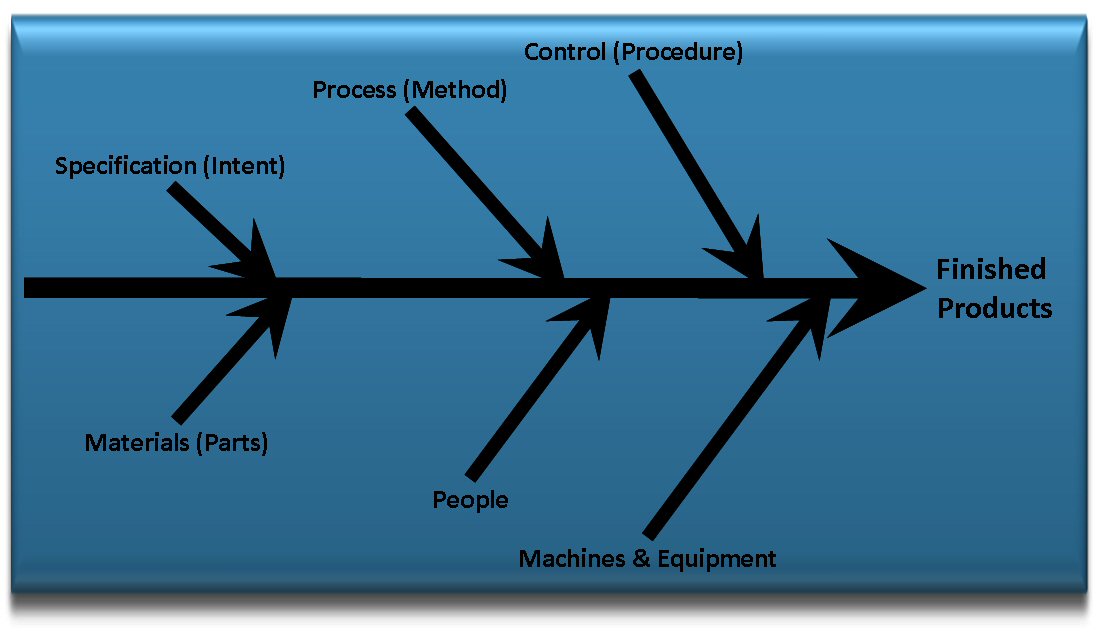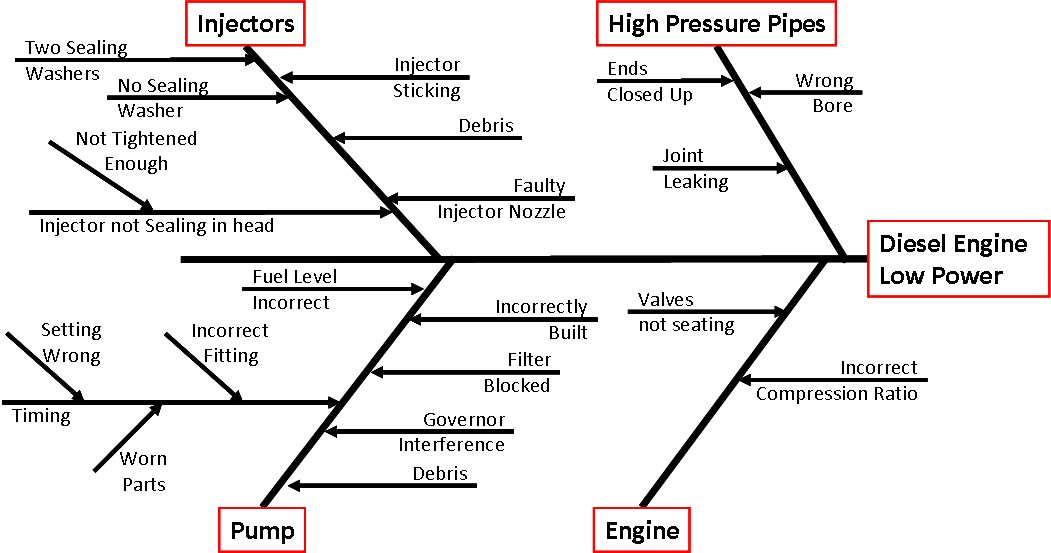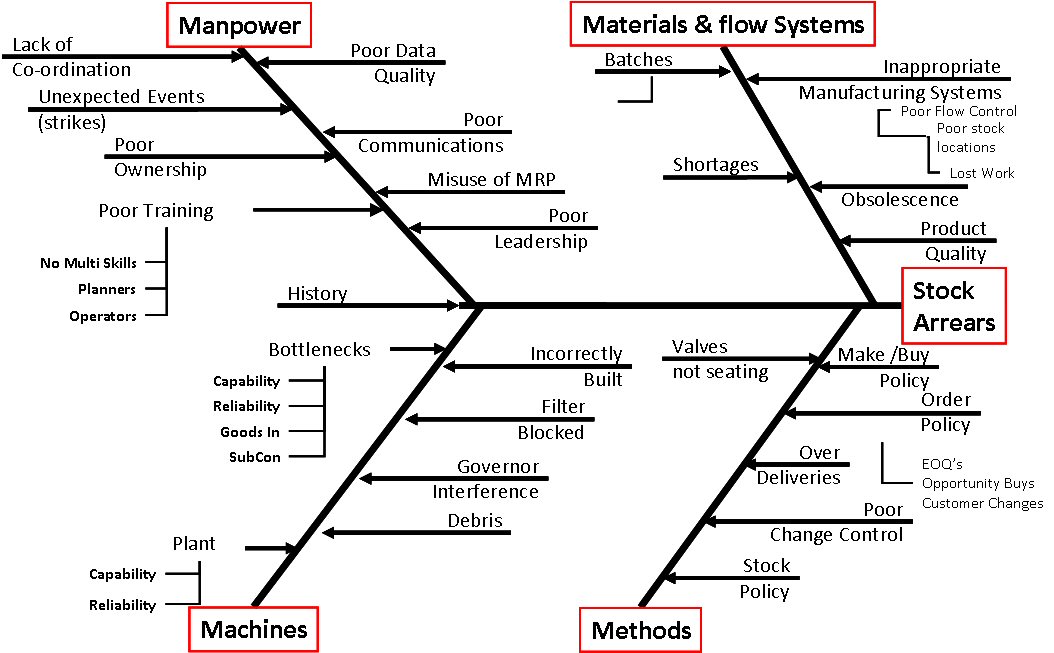5.34 - Cause and Effect (Ishikawa or Fishbone) Analysis
Overview
In other guides we have been shown how to measure variation and how to control it. In this guide we see how to find the things to measure or focus on. The Cause and Effect (Ishikawa or Fishbone) diagram helps to isolate where we should focus our attention.
Basic Form of the Cause and Effect Diagram

A cause and effect diagram is used to create an orderly layout of factors affecting the result of something, in this case a finished product.
The simple arrangement shown above can be extended into more complex diagrams. For instance the materials arrow could have more arrows added to it to isolate sub-causes of material variation, such as width, thickness, chemical composition, hardness etc.
A process must be understood and its elements identified before appropriate controls can be designed and applied. As shown in the above diagram the process elements might be people, equipment, materials, methods and the environment. They will affect some or all of the parts of the process. The experience of all individuals who understand the different aspects of the process should be combined and displayed in an understandable way. The cause and effect diagram is one way to do that effectively. They can help the presentation of the various factors and is instrumental in the structured analysis of a problem.
Some Examples
Example 1 - Application to a Product

Example 2 - Application to a Materials Flow Logistic System

Summary
Professor Kaoru Ishikawa created Cause & Effect Analysis in the 1960s.
The technique uses a diagram-based approach for thinking about all of the possible causes of a problem.
It helps carry out a thorough analysis of a problem situation.
There are four steps to using Cause and Effect Analysis.
- Identify the problem.
- Work out the major factors involved.
- Identify possible causes.
- Analyze your diagram.
Cause and Effect Analysis is particularly useful to help solve complex problems.